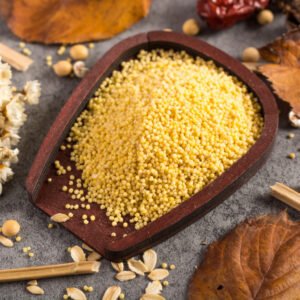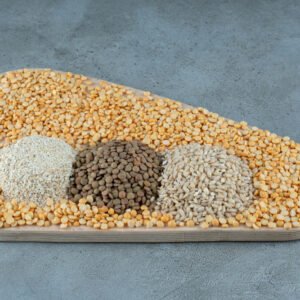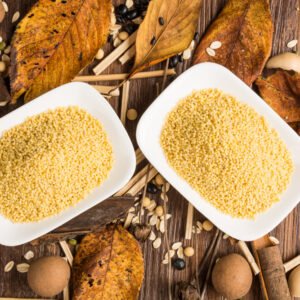Oil seeds form the backbone of global agricultural trade and nutrition. These crops provide cooking oils, animal feed, industrial materials, and protein-rich meals that support billions of people worldwide. Understanding which oil seeds dominate production helps farmers, traders, and consumers make informed decisions about food security and agricultural investments.
This guide explores the most commonly grown oil seeds, their cultivation requirements, production statistics, and why they matter in today’s agricultural landscape.
Understanding Oil Seeds and Their Classification
Oil seeds are crops grown specifically for extracting edible or industrial oils from their seeds. These plants store energy in the form of lipids, making them perfect for oil production.
Agricultural experts divide oil seed crops into three main categories. Annual or biennial crops include soybeans, sunflower, groundnuts, and rapeseed. Perennial tree crops encompass coconuts and oil palms. The third category features embryo byproducts like cottonseed and corn germ.
Each category serves different agricultural systems and markets. Annual crops offer flexibility for rotation farming, while perennial trees provide long-term yields with lower annual maintenance.
Also Read:- Rapeseed Oil vs Olive Oil: Which Should You Choose?
The Top Commonly Grown Oil Seeds Worldwide
Soybeans: The Global Leader
Soybeans dominate the international oil seed market. In the 2023/24 crop year, soybeans represented the leading type of oilseed worldwide. This crop accounts for more than 50% of total oil crop production globally.
The United States, Brazil, and Argentina lead soybean production. In 2024, Illinois, Iowa, and Indiana accounted for more than 37 percent of total U.S. production. Over the past decade, American soybean acreage has expanded northwest into Minnesota, North Dakota, South Dakota, and Nebraska.
Farmers prefer soybeans because they fix nitrogen in soil, reducing fertilizer costs for subsequent crops. The beans produce both oil and high-protein meal, making them economically versatile. Soybean oil serves cooking needs, while the meal feeds livestock operations worldwide.
Rapeseed (Canola): The European Favorite
Rapeseed ranks as the second most common oil seed. The European Union stands as a major producer, with production reaching approximately 29 million metric tons. This crop thrives in temperate climates and produces oil with favorable nutritional profiles.
Canola, a variety of rapeseed bred for low erucic acid content, has gained popularity in North America and Australia. The oil contains healthy omega-3 fatty acids and works well for both cooking and industrial applications.
Production faces challenges including a yield gap of 20 to 30% in organic systems. Pest management, particularly for rape pollen beetle, remains a concern for growers. Despite these obstacles, rapeseed oil production increased by approximately 1.8 times between 2001 and 2019.
Sunflower: The Versatile Performer
Sunflower seeds rank third among commonly grown oil seeds. Global sunflower oil production has more than doubled in recent decades, increasing by 2.2 times between 2001 and 2019. Production reached approximately 21.59 million metric tons in the 2022/23 crop year.
This crop adapts well to various climates and soil types. Ukraine, Russia, and Argentina lead sunflower production, with significant cultivation across Eastern Europe and South America.
Sunflower offers advantages for organic production systems. The crop requires less intensive pest management compared to other oil seeds. Both confectionery and oil-type varieties provide farmers with market flexibility.
Groundnut (Peanut): The Protein-Rich Option
Groundnuts grow across 84 countries, covering approximately 24.52 million hectares with production reaching 34.15 million metric tons. India cultivates about 28% of the world’s groundnut area, making it the second-largest producer globally.
This legume thrives in warm climates with well-drained sandy soils. Groundnut oil features high smoke points, making it popular for cooking and frying. The protein-rich residue after oil extraction provides nutritious animal feed and human food products.
Small-scale farmers in developing nations rely heavily on groundnut cultivation. The crop provides food security through direct consumption and income generation through oil sales.
Cottonseed: The Valuable Byproduct
Cottonseed oil comes from cotton production, making it a secondary oil seed crop. This classification means farmers grow cotton primarily for fiber, with oil extraction as an added benefit. Despite this status, cottonseed contributes substantially to global vegetable oil supplies.
The oil works well for cooking and food processing. After oil extraction, cottonseed meal provides high-protein feed for dairy cattle and other livestock. This dual-purpose nature makes cottonseed economically valuable for cotton-growing regions.
Major cotton producers like India, China, the United States, and Pakistan generate significant cottonseed volumes. The crop grows in both tropical and temperate zones, depending on cotton variety.
Palm and Coconut: The Tropical Giants
Palm oil dominates tropical oil production. Between 2001 and 2019, palm oil production multiplied by three times, outpacing all other vegetable oils. Indonesia and Malaysia produce over 85% of global palm oil.
Oil palms yield more oil per hectare than any other oil seed crop. A single hectare can produce 3-6 tons of oil annually. This efficiency makes palm economically attractive despite environmental concerns about plantation expansion.
Coconut palms provide oil from both the meat (copra) and kernel. Small island nations and coastal regions depend on coconut cultivation. The oil serves food, cosmetic, and industrial purposes.
Why These Oil Seeds Lead Global Production
Several factors explain why certain oil seeds dominate cultivation. Here is why farmers and nations invest in these specific crops:
- Economic Returns: Soybeans and palm oil offer the highest profitability per hectare. Strong international demand maintains stable prices, encouraging continued production.
- Dual-Purpose Value: Many oil seeds provide both oil and high-protein meal. This versatility creates multiple revenue streams from a single crop.
- Climate Adaptability: Top oil seeds grow across diverse climatic zones. Soybeans thrive from tropical to temperate regions. Sunflowers tolerate drought better than many alternatives.
- Processing Infrastructure: Established crushing facilities and refineries support major oil seed production. Countries with processing capacity naturally encourage more cultivation.
- Government Support: Agricultural policies often favor oil seed production through subsidies, research funding, and guaranteed prices. These incentives shape planting decisions.
The Role of Oil Seeds in Modern Agriculture
Oil seeds contribute beyond simple oil production. These crops play multiple roles in sustainable farming systems and food security.
Leguminous oil seeds like soybeans and groundnuts fix atmospheric nitrogen. This natural process reduces chemical fertilizer needs, lowering production costs and environmental impact. Crop rotation with oil seeds improves soil health for subsequent plantings.
The protein meals left after oil extraction feed millions of livestock animals. This byproduct makes meat, dairy, and egg production economically feasible. Without oil seed meals, animal agriculture would face much higher costs.
CMS Industries recognizes these agricultural realities. As a leading agricultural products manufacturer and exporter in India, the company supplies a wide range of oil seeds to international markets. Their expertise in sourcing quality groundnuts, cottonseed, and other oil seeds supports global food systems.
Regional Production Patterns and Specialization
Different regions specialize in specific oil seeds based on climate, soil, and infrastructure. Understanding these patterns helps explain global trade flows.
The Americas dominate soybean production. The United States leads in advanced farming technology and established processing infrastructure. Brazil’s tropical climate and vast arable land support rapid expansion. Argentina benefits from favorable growing conditions and export-oriented policies.
Europe focuses on rapeseed cultivation. The crop matches the continent’s temperate climate perfectly. Short-season varieties allow cultivation across northern latitudes. Strong biodiesel policies create additional demand beyond food uses.
Asia leads in groundnut and coconut production. India’s large farming population and suitable climate support extensive groundnut cultivation. Southeast Asian islands provide perfect conditions for coconut palms.
Processing and Quality Considerations
Oil seed quality affects both oil yield and final product characteristics. Farmers must manage several factors during cultivation and harvest.
Moisture content at harvest determines storage stability. Excess moisture promotes mold growth and rancidity. Most oil seeds require drying to 8-12% moisture before storage.
Seed damage during handling reduces oil quality and increases processing losses. Mechanical harvesters must balance efficiency with gentle handling. Post-harvest processing facilities invest in equipment that minimizes seed breakage.
Oil composition varies by variety, growing conditions, and maturity at harvest. Processors prefer consistent raw materials that yield predictable results. Contract farming arrangements help maintain quality standards.
CMS Industries maintains strict quality control throughout sourcing and export operations. This attention to quality ensures customers receive oil seeds that meet international standards for oil content and purity.
Market Trends and Future Outlook
Global oil seed demand continues growing. Several trends shape the industry’s future direction.
Population growth drives steady increases in cooking oil consumption. Rising incomes in developing nations accelerate demand for meat, which requires protein meal from oil seeds. These factors ensure continued market expansion.
Biofuel policies affect oil seed markets significantly. Rapeseed oil for biodiesel and soybean oil for renewable diesel create non-food demand. Policy changes in major economies can shift production patterns rapidly.
Sustainability concerns influence production methods. Consumers and regulators scrutinize palm oil production for deforestation impacts. Organic oil seed production grows, though yields typically lag conventional systems.
Climate change presents both challenges and opportunities. Shifting rainfall patterns may open new production regions while threatening traditional areas. Breeding programs focus on drought tolerance and heat resistance.
Choosing the Right Oil Seeds for Your Needs
Whether you’re a farmer planning next season’s crops or a buyer sourcing raw materials, understanding oil seed characteristics helps decision-making.
- For Farmers: Consider your local climate, available equipment, and market access. Soybeans suit areas with adequate rainfall and established processing facilities. Sunflowers tolerate drier conditions. Groundnuts work well for smallholders with limited mechanization.
- For Buyers: Evaluate oil content, protein meal quality, and supply reliability. Soybeans offer the most liquid market with numerous suppliers. Specialty crops like safflower or sesame command premium prices but have limited availability.
- For Processors: Infrastructure requirements vary by crop. Soybeans and rapeseed need similar equipment. Palm processing requires specialized facilities. Consider raw material costs, processing efficiency, and end-product markets.
How CMS Industries Supports Oil Seed Markets
CMS Industries operates from Kachchh, Gujarat, serving international markets for two decades. The company sources oil seeds directly from Indian farmers, ensuring fair prices and quality control.
Their product range includes groundnuts, cottonseed, and other oil seeds grown across India’s diverse agricultural regions. Quality testing and proper storage maintain seed integrity during export operations.
As a reliable supplier, CMS Industries connects international buyers with India’s agricultural production. Their experience in logistics and trade documentation facilitates smooth transactions across borders.
Next Steps: Connect With Quality Oil Seed Suppliers
Understanding commonly grown oil seeds helps stakeholders make better decisions. Whether you need reliable supplies for processing, quality seeds for planting, or market information for trading, working with experienced suppliers makes the difference.
CMS Industries offers comprehensive agricultural product solutions including premium oil seeds sourced from trusted Indian farmers. Their commitment to quality, competitive pricing, and reliable delivery serves customers across global markets.
Visit CMS Industries to explore their complete range of agricultural products and discuss how their expertise can support your oil seed requirements. Their team understands international quality standards and can customize solutions for your specific needs.
Frequently Asked Questions
Q.What is the most commonly grown oil seed in the world?
Soybeans are the most commonly grown oil seed globally, representing over 50% of total oil seed production. The United States, Brazil, and Argentina lead cultivation. Farmers value soybeans for their dual purpose: producing both cooking oil and high-protein animal feed from a single crop.
Q.Which countries produce the most oil seeds?
The United States leads in soybean production, particularly in Midwestern states. Brazil and Argentina also rank among top producers. China grows significant quantities of rapeseed and groundnuts. India cultivates the largest area of groundnuts globally. European Union countries focus on rapeseed. Indonesia and Malaysia dominate palm oil production.
Q.What are the main uses of oil seeds beyond cooking oil?
Oil seeds serve multiple purposes beyond cooking oil. The protein meal remaining after oil extraction feeds livestock, supporting meat, dairy, and egg production. Industrial uses include biodiesel fuel, lubricants, cosmetics, and pharmaceuticals. Some oil seeds like groundnuts are consumed directly as food.
Q.How do oil seeds improve soil health?
Leguminous oil seeds like soybeans and groundnuts fix atmospheric nitrogen through root nodules. This biological process adds nitrogen to soil naturally, reducing chemical fertilizer requirements. Crop rotation with oil seeds breaks pest and disease cycles, improving overall soil health and productivity for subsequent crops.
Q.What factors affect oil seed quality and yield?
Climate conditions including rainfall, temperature, and sunshine directly impact yields. Soil quality, pest management, and harvest timing affect both quantity and quality. Proper seed variety selection for local conditions matters greatly. Post-harvest handling, including drying and storage, preserves oil content and prevents rancidity.




